Last updated: November 27th, 2019
Your life is a reflection of the decisions that you make. And, if you have ADHD, there’s a good chance that you’ve made some pretty impulsive, irrational decisions in your life.
I know that I’ve definitely lived my life this way at times.
Don’t worry though.
Everyone who suffers from ADHD makes questionable decisions every once in a while (just like all humans do).
But, because ADHD is a condition that affects your brain’s prefrontal cortex, this means that many people with ADHD are especially prone to:
- Make impulsive judgments
- Have difficulty with solving problems
- Experience trouble managing emotions
- And much more…
Let’s just say that people with ADHD aren’t always the greatest decision makers in the world.
Some definitely are.
And some definitely aren’t.
However, the good news is that there’s a stupid simple way for anyone to make effective decisions with ADHD every single time.
This method has a very high success rate, because it weighs ALL of the different options that you must choose between. This “decision-making trick” is fast, free, and easy.
In this article, I’m going to explain how you can use this easy decision-making trick for every major decision that you need to make in your life.
After learning this simple trick, you won’t feel overly stressed, uncertain, or confused about making a major life decision ever again.
Enjoy…
Contents
What is the Weighted-Average Decision Matrix?
The Weighted-Average Decision Matrix (WADM) is a tool that helps you make important decisions, because it forces you to visualize every single aspect of the decision-making process.
So, rather than walking around your house or apartment thinking about a major decision that you have to make – you can now SEE the different factors that make up your decisions.
The WADM applies a scientific approach to decision-making, because it forces you to:
- Identify “decision factors”
- Weigh the importance of each decision factor
- Rate each decision factor respective to each choice
- Get your decision based on a simple mathematical calculation
In other words, the WADM helps you clearly see ALL of the factors that you need to consider when you’re making a decision.
The WADM ultimately removes emotion and impulsiveness from the decision-making process, and allows you to make decisions that improve your odds of long-term success and happiness.
And best of all, the WADM essentially makes your decisions for you.
It’s safe to say that most people who use the WADM are very happy with the decisions that they end up with.
When should you use the Weighted-Average Decision Matrix?
You can use the WADM for all major life decisions, such as when you’re deciding whether to…
- Attend college or go straight into a career
- Stay in California or move to Nevada
- Purchase a home or lease an apartment
- Get a new job or keep your current job
- Buy a new sports car or purchase a pre-owned SUV
- Manage your ADHD naturally or take ADHD medication
- Travel abroad or stay in your current city
Whenever you need to remove emotion and impulsiveness from a major life decision, I recommend using the WADM to find a clear answer.
The WADM works for any important life decision that you’re faced with. Every single time.
How to use the Weighted-Average Decision Matrix
There are ways to hand-write a WADM, or create your own WADM from scratch.
But, I haven’t bothered with any of these old-school methods…
Because in the age of the internet, your WADM should be automated with technology…
Help My Decision is the best free WADM website that I use on a regular basis.
I’m sure there are other WADM services that you can use as well (you can run a Google search for “Weighted-Average Decision Matrix” if you want).
But, for this article, I’ll take you step-by-step through the stupid simple decision-making process used on Help My Decision.
Just click the “Start Now” button on Help my Decision, and follow these simple steps to get your decision in less than 5 minutes…
Step 1. Write down the decision that you’re faced with
This is where you must simply answer the question:
“What is your decision?”
In my example, I’ve created a hypothetical decision for my own life:
“Do I stay in Dallas, or move to Miami?”
(Yes, this is a real decision that I’ve been playing with).
But, for your own decision, you might have two, three, or even four choices within your decision.
You will make a note of this in the section where it asks, “How many choices are there within your decision?”
Most people will be faced with just two choices. But, there’s nothing wrong with having many options!
Step 2. Label the choices that make up your decision (“decision outcomes”)
This is where you label your “decision outcomes”.
In my example decision, my decision outcomes are the following:
- Stay in Dallas
- Move to Miami
Pretty simple, right?
You can just list your unique decision outcomes, and proceed to the next step…
Step 3. Identify all factors related to your decision (“decision factors”) and rate these factors on a scale of 1 to 10
Now, it’s time for you to list ALL of the decision factors that are relevant to your decision, and then rank those decision factors on a scale of 1 to 10.
For example, because I’m considering whether to stay in Dallas or move to Miami, I’ve listed ALL of the factors that play a role in this decision, such as…
- Opportunities for Growth – Weight of 10 (critically important)
- Cost of Living – Weight of 8 (very important)
- Lifestyle – Weight of 7 (average importance)
- Travel-Friendliness – Weight of 7 (average importance)
- Fun – Weight of 7 (average importance)
I value opportunities for growth and cost of living above all else at this stage of my life. This is why I assigned a weight of 10 to opportunities for growth, and a weight of 8 to cost of living.
Then, I consider the lifestyle, travel-friendliness, and fun that a city has to offer. I assigned a weight of 7 to these decision factors.
These are the 5 core decision factors that influence my decision of whether to stay in Dallas or move to Miami.
You can use these same decision factors for yourself. Or you can create your own if you like.
Once you’ve listed your decision factors and assigned the appropriate weights, you can proceed to the next step.
Step 4. Rate factors for choice #1
This is probably the most important step of the WADM process.
Because, this is where you will rate your decision factors in accordance with the first choice that you’re faced with.
In my example decision, you can see that I’ve rated the decision factors of staying in Dallas as follows:
- Opportunities for Growth – 10 rating (extremely strong)
- Cost of Living – 7 rating (average)
- Lifestyle – 7 rating (average)
- Travel-Friendliness – 7 rating (average)
- Fun – 7 rating (average)
But, keep in mind that these rankings only apply to choice #1.
You still have to rate the factors for choice #2 (see the next step)…
Step 5. Rate factors for choice #2
This step is equally important, because you’re now rating each decision factor for choice #2.
In my example decision, you can see that I’ve rated the decision factors of moving to Miami as follows:
- Opportunities for Growth – 10 rating (extremely strong)
- Cost of Living – 5 rating (pretty bad)
- Lifestyle – 10 rating (extremely strong)
- Travel-Friendliness – 10 rating (extremely strong)
- Fun – 10 rating (extremely strong)
Based on my ratings, it’s beginning to look like moving to Miami is the strongest contender.
But, let’s go ahead and see my official decision…
Step 6. Get your decision
There is a button that you will push on Help My Decision to get your final decision.
In my case, the best choice for my life is to move to Miami.
You can see that moving to Miami scored 350, while staying in Dallas scored a measly 303.
This is because the lifestyle, travel-friendliness, and fun decision factors for moving to Miami are extremely strong, while the lifestyle, travel-friendliness, and fun decision factors of staying in Dallas are just average.
Other than Miami’s bad cost of living – every factor of moving to Miami is equal to or better than staying in Dallas.
To offset the poor cost of living in Miami – I may actually go through another WADM process, in order to compare the various decision factors of moving to Miami vs. moving to Fort Lauderdale (or a similar beach city that has a better cost of living than Miami).
You can repeat the WADM process as many times as you need to in order to achieve the best possible decisions for your life.
It’s actually really fun to see all of the different decisions that you can create for your life.
Step 7. See your decision analysis (optional)
Your decision analysis is just a simple breakdown of the different factors that went into making your decision.
This makes it easy for you to see exactly how your decision was calculated.
I love the clarity and conciseness of the WADM. There’s no arguing or emotions involved.
It’s just a basic mathematical calculation that provides you with the best decisions for your life based on your own decision factors and ratings.
Make sure to take advantage of this tool, and use it for everything that it’s worth.
Conclusion
Overall, I hope that you use this tutorial to make clear and thoughtful decisions for your life.
You can work through the WADM in just a few minutes, and potentially save yourself many agonizing hours that typically go into the emotional, impulsive, ADHD decision-making process.
If you use the WADM to make a decision, please make sure to leave a comment in the comments section below, and tell me about the decision that you came up with.
I’d love to hear all about it. Thanks.
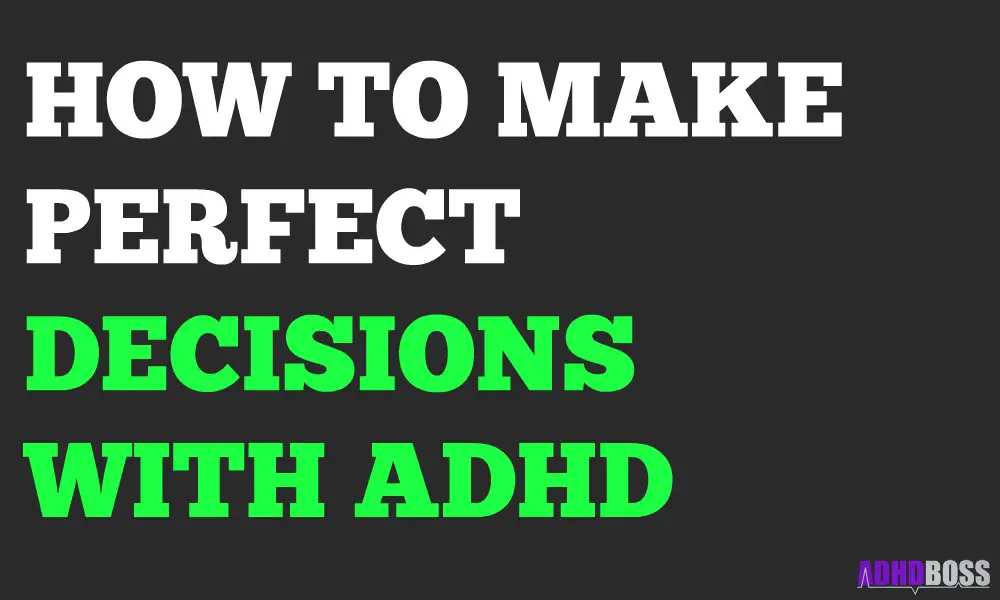
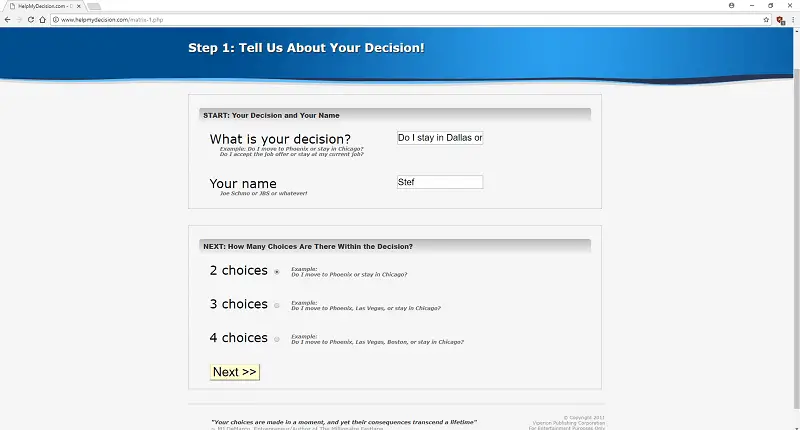
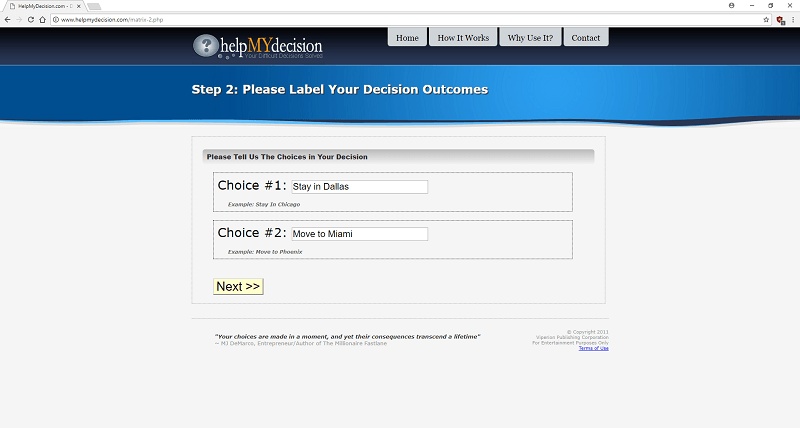
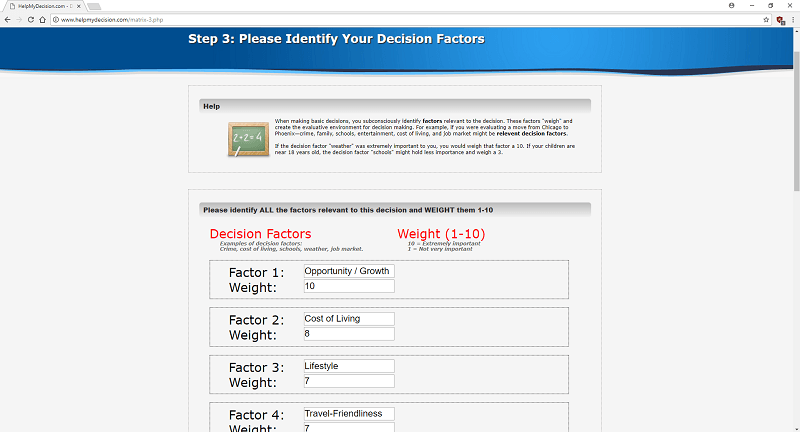
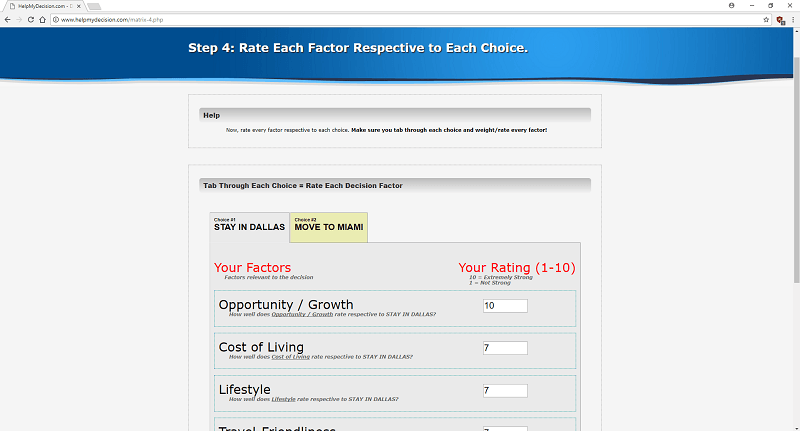
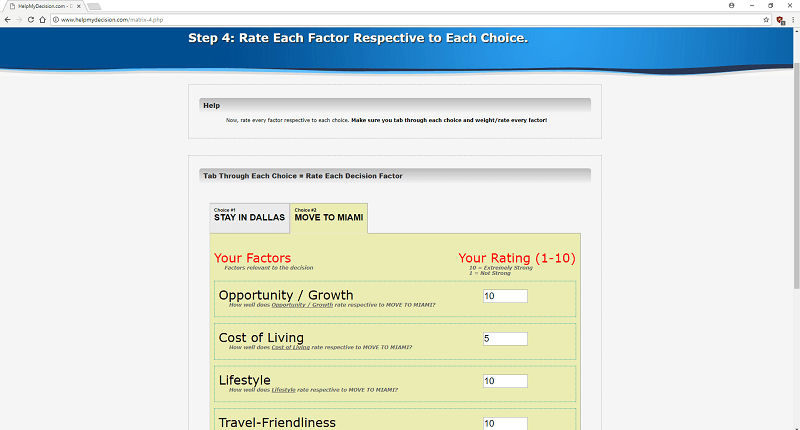
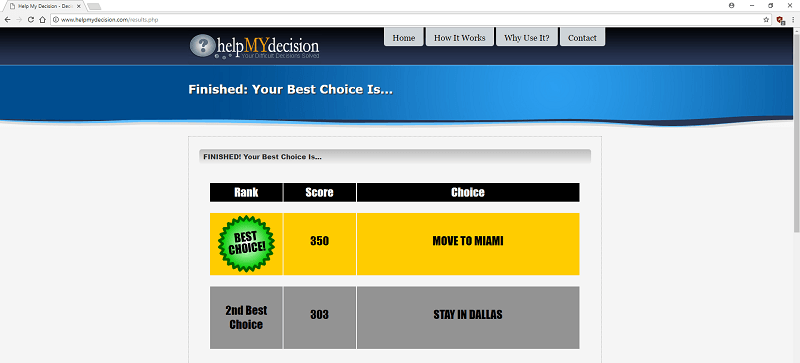

Leave a Reply